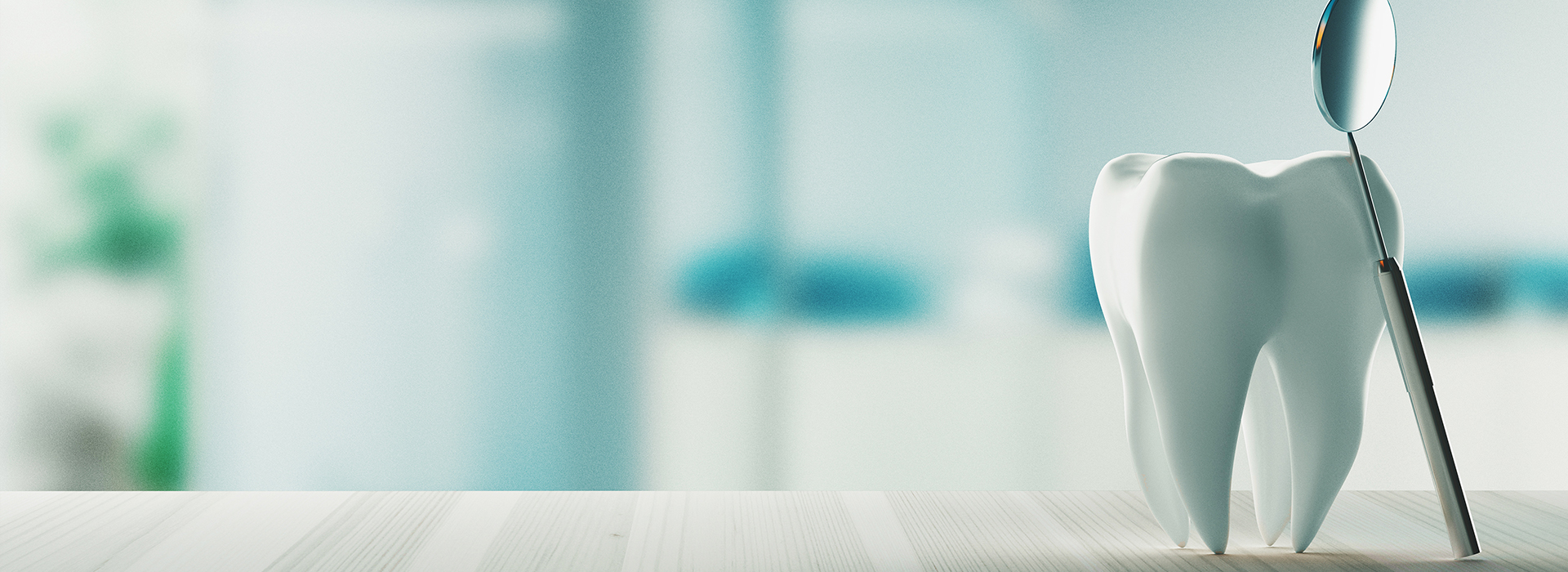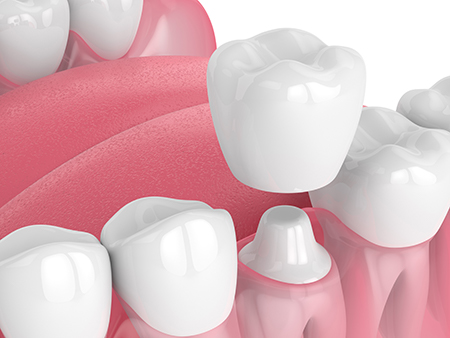North Haven Office

Our Offices
41 Middletown Ave
North Haven, CT 06473
Existing Patients: (203) 234-3900
New Patients: (203) 309-2799
Cromwell Office

At the office of Nova Dental, our approach to restorative dentistry balances durable results with thoughtful aesthetics. We combine modern clinical protocols and contemporary dental ceramics so patients regain strength and confidence in teeth that look natural and perform reliably. Every treatment begins with careful evaluation — we aim to restore form and function while preserving as much healthy tooth structure as possible.
Even though enamel is the hardest substance in the body, teeth remain vulnerable to decay, fractures, and wear from habits like clenching or grinding. In many cases, a dental filling will repair a minor defect, but when the damage is extensive or a tooth has undergone root canal therapy, a full-coverage restoration is often the most predictable way to protect the tooth long term.
Advances in all-ceramic materials mean crowns no longer need a metal framework to be strong and attractive. Today’s ceramic crowns combine strength, biocompatibility, and lifelike optical properties, allowing patients to choose restorations that blend seamlessly with surrounding teeth without the dark margins associated with older restorations.
A crown is a full-coverage restoration that rebuilds a tooth’s shape, protects weakened structure, and restores chewing function. Dentists commonly recommend crowns after extensive decay, large failed restorations, or traumatic fractures — situations where a simple filling would be insufficient to prevent future breakdown.
Crowns are also indicated to protect teeth that have undergone root canal therapy. After a canal, the remaining tooth can be brittle, and a crown helps shield it from the forces of biting and grinding. Additionally, crowns can anchor bridgework or cover dental implants, acting as the visible, functional portion of those restorations.
Beyond structural needs, crowns can address cosmetic concerns such as unsightly staining, irregular shape, or disproportionate tooth size. When aesthetics are important, the choice of crown material and laboratory or milling techniques plays a significant role in achieving a natural, harmonious result.
To restore a tooth with extensive decay or a fractured crown
To replace a large or broken filling that no longer provides adequate support
To finish a dental implant and recreate a natural-looking tooth
To serve as a retainer for a dental bridge, replacing missing adjacent teeth
To strengthen a tooth after root canal therapy
To correct shape, color, or minor alignment issues for a better smile appearance

The pathway to receiving a ceramic crown is deliberate and patient-focused. Treatment typically starts with a comprehensive examination and diagnostic imaging to assess the tooth’s remaining structure, the health of surrounding tissues, and how the tooth meets opposing teeth when you bite.
Once a crown is recommended, the dentist will prepare the tooth by removing compromised material and shaping the remaining tooth so the crown can seat securely. Impressions or digital scans capture precise details used to design a restoration that matches adjacent teeth in size and contour.
Temporary protection is provided while the definitive crown is fabricated. When the final restoration returns from the lab or is milled in-office, the dentist will check fit, occlusion (bite), and shade before cementing the crown with a durable dental adhesive. We guide patients through post-placement care to ensure a comfortable transition.
All-ceramic crowns perform two essential roles: they restore chewing efficiency and they recreate natural tooth anatomy for a pleasing appearance. Modern ceramics mimic the translucency and light-reflecting qualities of enamel, making restorations virtually indistinguishable from natural teeth when polished and layered skillfully.
From a functional standpoint, contemporary ceramics achieve levels of strength suitable for most areas of the mouth. Some ceramic systems combine high flexural strength with excellent wear resistance, allowing crowns to withstand everyday forces while remaining gentle to opposing teeth.
Biocompatibility is another advantage — metal-free crowns reduce the risk of allergic response and eliminate visible dark lines at the gumline that can occur with older porcelain-fused-to-metal designs. For patients concerned about both appearance and tissue health, ceramic crowns offer a modern solution.
Exceptional aesthetics — close color match, translucency, and surface luster
Conservative preparation options with thinner ceramic systems when appropriate
Metal-free construction for improved gum tissue response and no visible metal margins
Stain resistance and long-term color stability with proper care

Not all ceramic crowns are identical; materials vary in strength, translucency, and how they are fabricated. The ideal choice depends on the tooth’s location, the amount of remaining tooth structure, and the aesthetic goals. We select materials to balance these factors for predictable, long-lasting results.
Lithium disilicate ceramics are popular for their combination of strength and exceptional esthetics, making them a common choice for front and some back teeth. Zirconia offers high fracture resistance and is often used where extra durability is required, while newer translucent zirconias provide an improved cosmetic outcome compared with earlier formulations.
For highly cosmetic cases, layered ceramic techniques or multi-shade fabrication can reproduce natural gradations of color and translucency. During treatment planning, we review material options and recommend the one that best matches the function and appearance needs of your specific situation.
Lithium disilicate — excellent esthetics and good strength for many situations
Leucite-reinforced porcelains — useful where a softer, highly polished surface is desired
Monolithic zirconia — superior strength for posterior teeth with high bite forces
High-translucency zirconia — improved appearance for visible areas while retaining strength

Our team follows evidence-based protocols to ensure crowns are planned and placed with precision. That includes accurate digital records, careful shade selection, and occlusal adjustments to integrate the restoration into your bite without introducing new stresses. Attention to these details helps crowns last and perform comfortably.
We also emphasize preservation — whenever possible, we recommend treatments that conserve natural tooth structure while delivering the protective benefits of a crown. For patients with bruxism or other functional concerns, we design restorations in conjunction with protective measures like night guards to extend the life of the crown.
As a practice serving patients in North Haven and Cromwell, we strive to combine technical expertise with a patient-centered approach. When you choose Nova Dental, you can expect clear explanations, individualized treatment plans, and a focus on outcomes that respect both function and appearance.
In summary, ceramic crowns are a versatile and modern option for restoring damaged or compromised teeth. They protect vulnerable teeth, restore reliable chewing function, and deliver natural-looking esthetics when planned and executed with care. If you’d like to learn more about whether a ceramic crown is the right choice for you, please contact us for more information.
While a dental filling is designed to replace a portion of a decayed or damaged tooth, a dental crown offers full coverage to restore the tooth’s entire outer surface. A well-fitting dental crown not only protects and strengthens the underlying tooth structure, but it also restores the tooth’s appearance and function.
The procedure for getting an all-ceramic crown is much like the procedure for getting any other type of crown. In all cases, the tooth needs to be prepared, an impression taken, and a permanent crown cemented into place. A single all-ceramic crown can typically be fabricated over the course of two visits. However, with CAD/CAM technology, a same-day crown can be fabricated from start to finish in a single visit. With the first approach, a temporary crown is typically worn until the second visit, when the permanent restoration is placed. As with every treatment plan, our office will explain your best options in care.
As the name implies, a temporary crown is only worn for a short time until the permanent crown is placed. A temporary crown is typically fabricated from durable tooth-colored dental acrylics. While designed to protect the underlying tooth between appointments, and until your new permanent crown gets placed, a temporary crown is also fabricated to look like a natural tooth and maintain the look of your smile.
While you should feel better having an attractive and functional tooth to restore your smile, your tooth may feel a little sensitive following treatment. This initial sensitivity will subside. We take great care to make sure your new restoration looks great, fits well, and your bite is perfect. However, we’re always happy to make any minor adjustments to ensure your comfort.
With some exceptions, teeth with root canal procedures are typically restored and protected from further damage with a full-coverage crown. Based on what’s best for your smile, our office will recommend the most appropriate restoration to maintain the health and longevity of your tooth following a root canal procedure.
A dental crown is a long-term restoration that, if properly cared for, can serve you well for many years to come. Once your new crown is placed, it requires the same brushing, flossing, and periodic checkups as your natural teeth. Avoid biting your fingernails and chewing on hard or sticky objects such as ice, pencils, or taffy, which can damage or loosen your crown. Remember, clenching and grinding your teeth puts excessive pressure on both natural teeth and dental restorations. Unless treated, this habit can compromise the longevity and integrity of your dental work, including crowns.
Although your new all-ceramic crown restores the tooth's strength, form, and function, you can still develop dental disease in the absence of proper care. To prevent gum disease and tooth decay, it’s essential to brush and floss as instructed and see our office for routine checkups, cleanings, and care.
How long a dental crown lasts depends on various factors, including your level of oral care, diet, and oral habits. While the standard answer is that dental crowns can last anywhere from 5 to 15 years, existing literature confirms that most dental crowns remain in place at 15 to 20 years.
At the office of Nova Dental, we strive to provide the highest quality of care to address all your dental needs. Once we’ve had the opportunity to examine your smile, we can give you a clear picture of any dental issues that are present, along with a quote for how much treatment will be. The cost of dental crowns can vary a little, depending on the type of crown and its location. Our goals are to provide the highest quality of care and help patients begin treatment without additional financial stress or delay. We’re always happy to answer all your questions on dental insurance coverage, available financing, and payment plans.
Coverage for all-ceramic crowns depends on your dental insurance plan. Today, many dental plans provide some level of coverage for all-ceramic crowns. At the office of Nova Dental, we work with patients to optimize their dental benefits and get the care they need to maintain healthy and beautiful smiles!
Ceramic crowns are full-coverage, metal-free restorations fabricated from advanced dental ceramics to rebuild a damaged or weakened tooth. These restorations are designed to replicate the translucency, color gradients, and surface lustre of natural enamel while providing structural support. Because they contain no metal substructure, ceramic crowns eliminate dark margins at the gumline and tend to be well tolerated by oral tissues.
Ceramic systems vary by composition and manufacturing method, but all aim to balance esthetics with mechanical performance. Modern ceramics can be milled in-office or layered by a dental laboratory to achieve customized contours and shades. When planned and placed properly, ceramic crowns restore function and appearance with a natural result.
A crown is recommended when a tooth has lost substantial structure due to decay, a large failed restoration, or a traumatic fracture that a filling cannot reliably restore. Teeth that have undergone root canal therapy are another common indication because the remaining tooth can become brittle and needs full-coverage protection. Crowns are also used to finish dental implants, anchor bridgework, or correct significant cosmetic concerns that simpler restorations cannot address.
The decision between a filling and a crown depends on how much healthy tooth remains and the expected functional demands on that tooth. Your dentist evaluates structural integrity, occlusion, and esthetic goals to recommend the most predictable long-term option. Preserving tooth structure is always a priority, but protection and longevity guide the final recommendation.
Treatment starts with a comprehensive examination and diagnostic imaging to evaluate tooth structure, surrounding tissues, and bite relationships. The tooth is then prepared by removing compromised material and shaping the remaining structure so the crown can seat securely; digital scans or conventional impressions capture the details needed to design the restoration. A temporary crown is placed while the final restoration is fabricated in a dental laboratory or milled in-office using CAD/CAM technology.
When the definitive crown is ready, the dentist verifies fit, contacts, occlusion, and shade before permanent cementation. Minor occlusal adjustments are made to integrate the crown into your bite without introducing new stresses. After placement, you will receive instructions for care and any temporary precautions to protect the restoration during the initial weeks.
Several ceramic materials are commonly used, each with distinct strengths and optical properties. Lithium disilicate offers excellent esthetics and good strength, making it popular for anterior and some posterior restorations, while leucite-reinforced porcelains provide a highly polished surface and pleasing translucency. Zirconia is prized for its high fracture resistance and is often used for posterior teeth or situations with elevated bite forces, and newer high-translucency zirconias improve appearance for visible areas.
The selection depends on the tooth’s location, the amount of remaining structure, and the patient’s esthetic goals. Dentists choose materials to balance translucency, strength, and conservative preparation when appropriate. Discussion during treatment planning helps match the material to functional demands and cosmetic expectations.
Ceramic crowns are versatile and can be used in both the anterior and posterior regions, but material selection is crucial to match functional and esthetic needs. For front teeth, highly esthetic ceramics such as layered lithium disilicate or leucite-reinforced porcelains recreate natural translucency and color gradations. For back teeth where biting forces are greater, monolithic or high-strength zirconia may be preferred to resist fracture while maintaining acceptable appearance.
Your dentist will evaluate occlusal forces, the amount of remaining tooth structure, and how much of the crown will be visible when you smile. In many cases a hybrid approach—using a stronger core with esthetic layering—can provide a good compromise between durability and appearance. The goal is to select a material and design that restore function without sacrificing a natural look.
Caring for a ceramic crown is similar to caring for natural teeth and focuses on daily hygiene and routine dental visits. Brush twice a day with a soft-bristled brush and fluoride toothpaste, and floss daily to prevent plaque buildup at the crown margins where recurrent decay can develop. Maintaining a balanced diet and avoiding habitually biting on very hard objects helps reduce the risk of chipping or undue stress on the restoration.
Regular professional exams and cleanings allow the dentist to monitor crown integrity, contacts, and gum health around the restoration. If you have bruxism or other functional concerns, the practice may recommend a night guard to protect both crowns and natural teeth. Promptly report any new sensitivity, looseness, or changes in bite so adjustments or interventions can be made early.
Ceramic crowns can last many years when designed appropriately and cared for diligently, but longevity varies based on several factors. Material choice, the quality of tooth preparation, the precision of fit, occlusal forces, and oral hygiene all influence service life. Habits such as clenching, grinding, or using teeth to open objects can shorten a crown’s lifespan by increasing wear or risk of fracture.
Regular dental follow-up, attention to occlusion, and protective measures like night guards help extend the functional life of a crown. The dentist also evaluates surrounding tissues and the integrity of margins at routine visits to detect early issues such as recurrent decay. Timely maintenance and conservative repairs when needed help preserve both the restoration and the underlying tooth structure.
Ceramic crowns are metal-free and generally offer superior esthetics because they avoid the dark margins sometimes visible with porcelain-fused-to-metal (PFM) restorations. All-ceramic systems can better mimic the translucency and light reflection of natural enamel, making them preferable for highly visible teeth. PFMs, however, historically provided a strong interface between a metal substructure and porcelain veneer, which in some high-stress situations offered durable performance.
Advances in ceramic technology have closed much of the strength gap that once favored PFMs, and many clinicians now choose metal-free options for both esthetic and biocompatibility reasons. The best choice depends on functional demands, the amount of remaining tooth, and esthetic priorities. Your dentist will discuss the tradeoffs and recommend the material that best suits your specific clinical situation.
When tooth damage is limited, more conservative restorations such as inlays, onlays, or porcelain veneers may preserve more natural tooth structure while restoring form and appearance. Direct composite restorations can be suitable for small to moderate defects and offer a conservative, single-visit option in some cases. For teeth that are unrestorable, options include extraction followed by implant-supported restorations or bridgework to replace the missing tooth.
The appropriate alternative depends on how much healthy tooth remains, the tooth’s functional demands, and the long-term prognosis for the tooth. Dentists evaluate structural stability, esthetic goals, and the potential need for future treatment before recommending a conservative or comprehensive approach. Shared decision-making ensures the selected treatment aligns with clinical needs and patient preferences.
After crown placement, many patients experience mild sensitivity or slight soreness that resolves within a few days as surrounding tissues adapt to the restoration. You should avoid chewing excessively hard or sticky foods on a newly cemented crown until the adhesive has fully set and you feel comfortable. Over-the-counter analgesics and gentle oral care are usually sufficient for short-term discomfort, but prolonged pain or persistent sensitivity should be evaluated.
If you notice a loose crown, a significant change in your bite, persistent pain, swelling, or signs of infection, contact the office promptly for assessment. For patients at the office of Nova Dental in North Haven and Cromwell, the clinical team will arrange a timely follow-up to address fit, occlusion, or any concerns. Early attention to issues helps protect the restoration and the underlying tooth.
